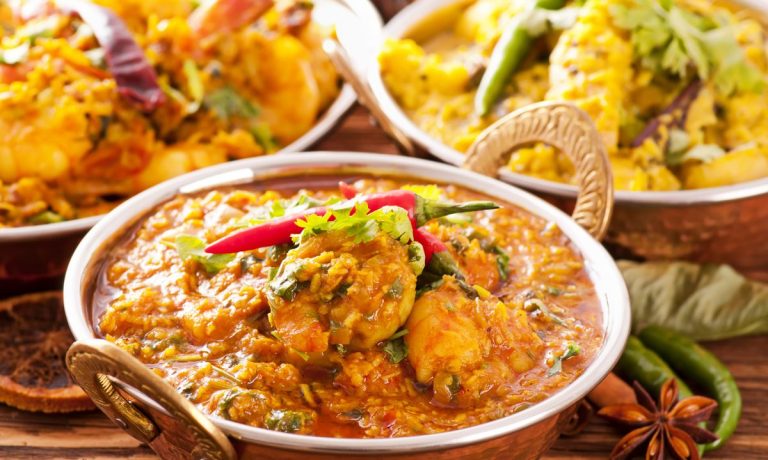Food Sellers Diversify Across Categories to Meet Expectations, Drive Spending

Increasingly, consumers are growing to expect their on-demand food providers to span categories. Restaurant aggregators such as DoorDash and Uber Eats are making moves into the grocery space, while online grocery marketplace Instacart has begun firing back by offering meal solutions.
Earlier this year, the grocery aggregator announced the launch of its Ready Meals Hub, selling hot food from supermarkets. In the fall, the company announced a partnership with heat-and-eat meal and meal kit company Sunbasket.
Related news: Instacart Aims to Price Out DoorDash with Launch of Meal Delivery
Instacart Fires Back at DoorDash With Prepared Meals Partnership
For those selling meals on Instacart, the company proves a valuable acquisition channel. Take, for instance, Quicklly, the Indian and South Asian food seller and marketplace that announced in late February the launch of a storefront on Instacart, selling a limited selection of its private-label meal kits and sauces.
“Initially, what we saw is that, within the Quicklly platform, we were targeting South Asians, because that was our target market,” Quicklly Co-founder Keval Raj told PYMNTS in an interview. “We know that Indian food is [enjoyed] among all the ethnicities, but still we never targeted them, because we wanted to [focus on our] niche. With Instacart, it gives us that access to their set customers, and that’s exactly what we [were] seeing [in the first] two weeks…. Ninety-eight percent of the orders are other than South Asian ethnicities, so that’s giving us access to that generic market.”
Standing Out
In the crowded marketplace, Raj argues that the company has found an underserved niche, enabling Quicklly to attract an audience despite the stiff competition.
“There’s no such direct competitors on even on Instacart … You won’t see anything [on its marketplace] which is very specialized in either South Asian groceries or food, so that gives us a competitive advantage,” he said.
In the eGrocery category, Weee, a company specializing in the delivery of groceries from a range of ethnicities including Indian offerings, recently announced a $425 million Series E fundraise. However, Raj argues that Weee and other competitors do not have the in-depth knowledge of the space that allows Quicklly to succeed.
Read more: Weee Raises $425M in Series E Round as Investors Look for eGrocery Differentiation
“We are talking about a very conservative culture,” he said. “Cultural know-how is a very big thing, and just getting into this space is not that easy… So far, they haven’t succeeded yet.”
A Foot in the Door
Selling on Instacart offers Quicklly an entry point to reaching a significant share of consumers, given that about one in 10 consumers across the United States use aggregators like Instacart, according to data from PYMNTS’ study What Consumers Expect From Their Grocery Shopping Experience, created in collaboration with ACI Worldwide. The study, which drew from a census-balanced survey of more than 2,300 U.S. adults conducted in June 2021, found that 11% of consumers buy groceries online using an aggregator that delivers the products the same day, though only 2% of consumers rank this channel as their most preferred grocery shopping method.
You may also like: Digital Features Can Help Grocers Win Over 43 Percent Of Shoppers
Additionally, with the name recognition that Quicklly gains through its placement on Instacart’s marketplace, the company also has the opportunity to acquire customers for its direct ordering channels, which offers not only meal and groceries but also catering, hot food through its third-party restaurant marketplace, nationwide shipping, gift sets and other options.
“We can still target those customers with different product lines from that we are not yet selling on Instacart,” Raj said.
The Two-Pronged Approach
Certainly, consumers continue to seek out restaurant delivery options, especially as trust in leading aggregators declines. Of the 58% of restaurant customers who do not order through aggregators, about one in four say that their decision to abstain is motivated in part by a lack of trust, reveals PYMNTS’ Restaurant Friction Index, created in collaboration with Paytronix, which drew from the results of a survey of a census-balanced panel of over 2,100 U.S. adults.
You may like: New Data Show Digital Loyalty Programs Are Key Differentiator For Top-Performing Restaurants
“The food ordering behavior is quite different than the grocery ordering,” said Raj, “and then with the nationwide as well, it’s a [differentiated] model, which adds to the customer retention aspect.”
The share of consumers purchasing groceries online meanwhile is significant, but far below the share ordering hot meals. Eighteen percent of consumers buy groceries through digital channels more often than in physical stores, according to data from PYMNTS’ study Decoding Customer Affinity: The Customer Loyalty to Merchants Survey 2022, created in collaboration with Toshiba Global Commerce Solutions, which drew from the results of a survey of a census-balanced panel of more than 2,000 U.S. consumers conducted in the late fall.
Get the full report: Decoding Consumer Affinity: The Customer Loyalty To Merchants Survey 2022
Quicklly, for its part, has seen that offering hot food in addition to groceries drives up overall purchasing frequency.
“[Regarding] the frequency of the users that are coming [to the site], they used to order let’s say two or three [times per month],” Raj said. “Now we are seeing even seven, eight [times]. So, definitely adding food has given that boost.”